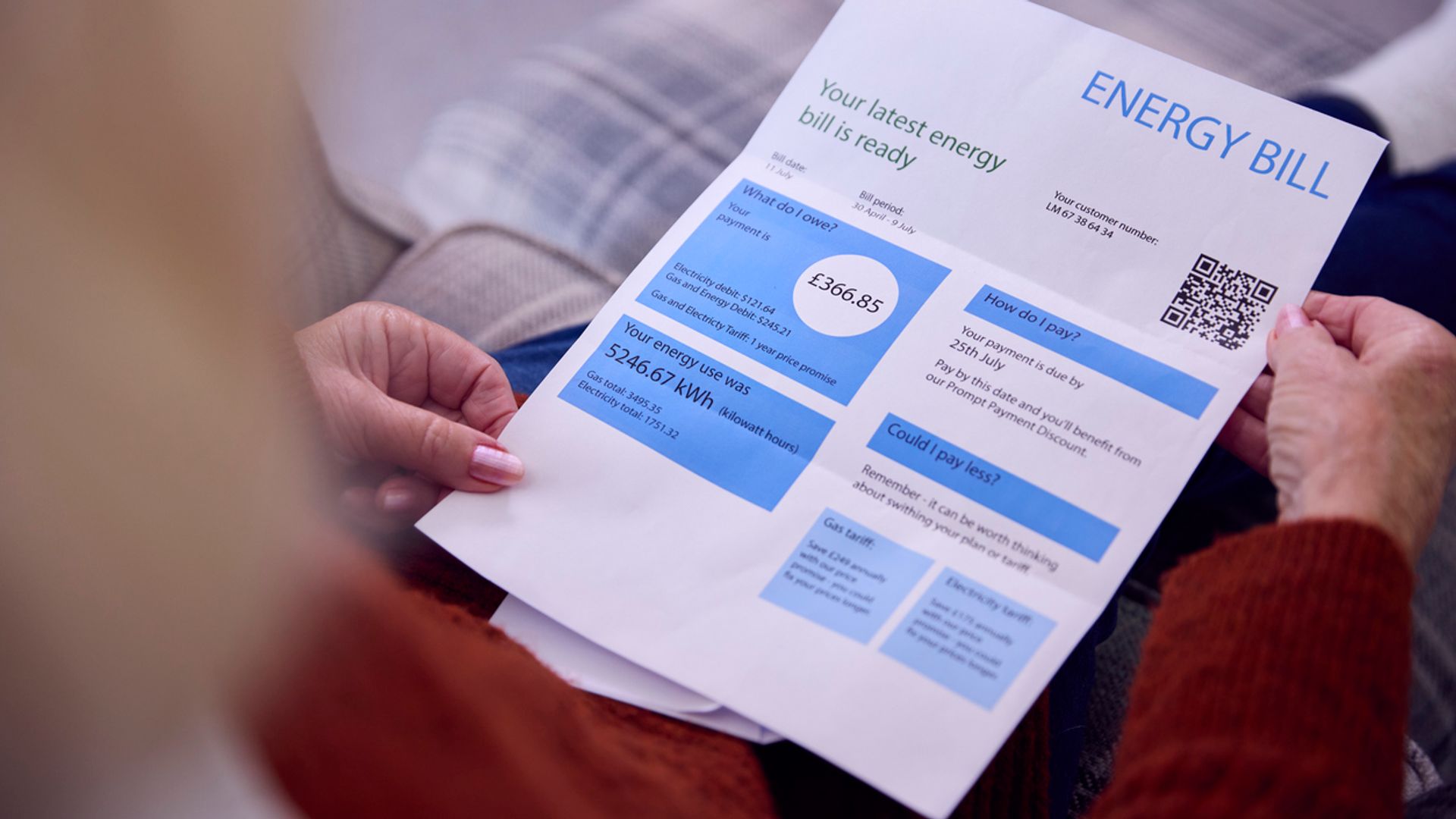The energy price cap will rise in October to an annual average of £1,717.
Industry regulator Ofgem said the 10% rise was largely due to higher wholesale gas prices and urged bill-payers to “shop around” for fixed-rate deals.
Money latest:
Warning £2,500 will be added to stamp duty ‘overnight’
But the latest increase – which means households paying by direct debit will pay £12 per month more – means the cap will remain around £500 up on the average annual bill levels seen before Russia’s invasion of Ukraine.
But what is the energy price cap? What is the real cost for households? And why is it important? Here’s what you need to know.
The energy price cap limits what utility companies can charge customers for a daily standing charge and each kilowatt-hour of gas and electricity they use.
Regulator Ofgem releases the cap quarterly and estimates how much the average household would typically pay over a year at the new unit price.
The figure is based on an assumed household with 2.4 people living in it, consuming 2,700 kWh of electricity and 11,500 kWh of gas.
The real annual cost per customer will be different depending on how much energy you use. If you use more gas and electricity than £1,717 buys, you will pay more.
With prices fluctuating significantly at each quarterly release over the last four years, the use of a yearly figure is also quite an imperfect basis for medium-term household budgeting.
Here’s what is actually capped:
• Each unit of electricity: 24.5p per kWh (up from 22.36p)
• Each unit of gas: 6.24p per kWh (up from 5.48p)
• Electric standing charge: 60.99p (up from 60.12p)
• Gas standing charge: 31.66p (up from 31.41p)
Ofgem’s price cap only applies to people in England, Scotland and Wales on standard variable or default tariffs.
This is most households, whether you pay by direct debit or a prepayment meter.
It doesn’t apply to the small numbers of people still on fixed-rate tariffs.
Please use Chrome browser for a more accessible video player
Originally introduced in 2019, the energy price cap sets a limit on the unit rate of gas and electricity a supplier can charge to protect consumers.
The action was mainly a response to the findings of a Competition and Markets Authority investigation in 2018, which found customers were paying a “£4bn loyalty penalty” by staying with providers who raised prices.
While it was originally reviewed biannually by Ofgem, the regulator started updating the price caps quarterly in August 2022 to provide stability in the energy market and reduce the risk of energy companies going bust.
Please use Chrome browser for a more accessible video player
Since the price cap was introduced, it has fluctuated wildly – partly in response to Russia’s war in Ukraine, the COVID pandemic, and record inflation.
When it was introduced in January 2019, the price cap was £1,137. It stayed roughly around this figure until 2022.
The energy price cap rose to £1,971 from April to September that year, a 54% increase from the previous period. It then spiralled to record highs in the wake of Ofgem starting to update the caps quarterly.
From October to December 2022, the cap was £3,549, and January to March 2023 saw an all-time high cap of £4,279.
Read more on Sky News:
Pound strongest against dollar since 2022
Jermaine Jenas sacked while live on air
Keep up with all the latest news from the UK and around the world by following Sky News
Be the first to get Breaking News
Install the Sky News app for free
In response, the Conservative government introduced an energy price guarantee which capped bills to £2,500, which was later raised to £3,000 in July 2023.
The cap fell to £2,074 in July that year, and has not reached over £2,000 since.









